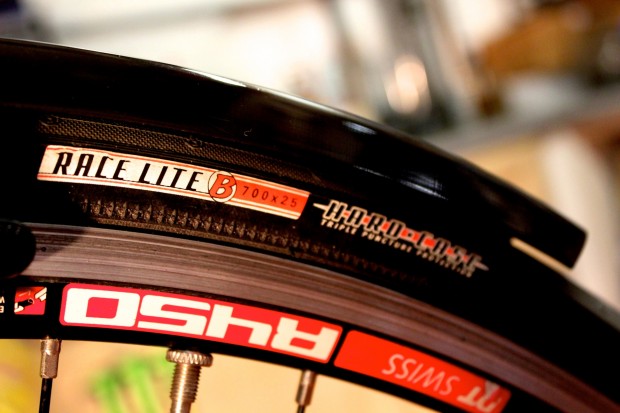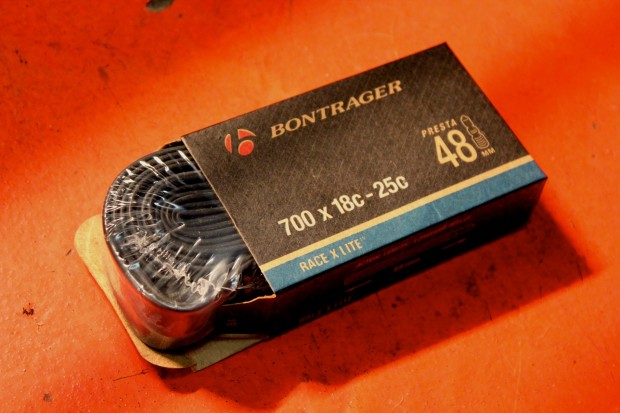Tyres and tubes
One of the first actions in dressing a bike for winter will involve swapping the lightweight, slender, and soft tyres used for summer for something harder, broader, and better able to withstand the demands of winter riding. The benefits are two-fold: not only will you be rolling on more resilient rubber, better suited to the season, but you’ll be saving your expensive summer rubber from the rigours of winter.
It was the case that a winter tyre would be wider than your summer rubber, but increasingly the divide is, err, narrowing as tests reveal that modern racing tyres in profiles as broad as 26c offer no disadvantage to rolling resistance. However, 23c remains the standard for summer (though this may change) and your winter-friendly replacement rubber is likely to be broader: 25c, or even 28c. A wider tyre places more rubber in contact with the ground and so increases grip on the typically slippery surfaces presented by the wettest season of the year.

The compound of a winter tyre is likely to be harder, too. While the most sophisticated summer tyres have a triple compound, balancing a super soft rolling surface with only marginally harder compounds elsewhere, a winter tyre is likely to have a hard centre for durability and a softer shoulder for cornering grip. Bear in mind that a slick road tyre, and even those with a tread pattern, will gain their greatest grip from downward pressure as well as the compound. Harder rubber will offer less grip, so downward pressure from the rider – particularly in corners – takes on a new importance in the wet. You can read more about weighting the front wheel here.
Punctures are far more prevalent in the winter months where rain washes grit onto the road surface and, on a wet road, sticks it to the tyre. Puncture protection belts are standard fare even for a summer tyre, but take on an increased importance in winter. Vectran, a synthetic fibre, is a popular choice with tyre manufacturers, and present on the popular Continental Grand Prix 4 Season, to give only one example.

Inner tubes are less of a seasonal item. More expensive latex tubes are able to deform more easily and so survive assaults, but given the higher risk of punctures in the winter, investing in a set is unlikely to be money well spent. A cheap butyl tube should do as well as any at this time of year. With no racing or events, weight won’t be an issue.
Lowering tyre pressures is likely to be your most effective means of staving off punctures. A reduction of 10psi will allow the tyre to deform more easily and increase the contact patch, and with it, grip.





